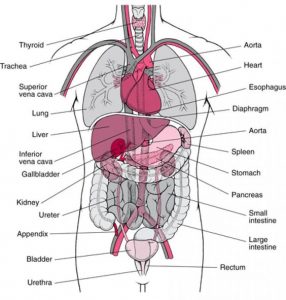Evolution of human beings has been quite a long journey, especially with the changes in the anatomy of the human body. Moreover, as the Homo sapiens are the topmost species in the evolutionary chain, their body has adapted to survive even in harsh conditions. As this evolutionary process has witnessed the development of many organs, it has also seen the shrinkage of certain organs to the extent that they have turned functionless.
Charles Darwin, the Father of Evolution, stated in his theory of Darwinism that those organs, which are utilized over generations, will ultimately shrink and loses their functionality with evolution. He stated these type of organs which were once active in the ancestors but not in the concerned species as a vestigial organ.
Vestigial organs are those, which have been rendered rudimentary in a particular species but were functioning and active in lower order organisms. In human beings, many organs have become rudimentary and small in size. Appendix, coccyx or the tailbone, wisdom teeth, pinna of the ear, plica seminaries (a remnant of the initial membrane), etc are the vestigial organs that can be found in human anatomy.
Out of these, vermiform appendix is an important and most considered vestigial organ.
Appendix Definition
The vermiform appendix is the inferior extension of the cecum of the large intestine. It is a blind pouch-like structure that resembles a worm, hence the name ‘vermiform’.
Appendix Location
The vermiform appendix is located at the junction of the large intestine and the small intestine. Anatomically, vermiform appendix falls in the quadrant of the right iliac fossa. It originates from the cecal and is bent in the downward direction.
Appendix Origin
According to Darwin’s theory, it is stated that the appendix has evolved from the lower class mammals. He also stated that during the evolutionary process, it was rendered functionless. However, recent studies have revealed that there is a controversy regarding the origin of the appendix and also the vestigiality of the organ.
According to the embryology, appendix develops from the midgut loop of the embryo.
Appendix Structure and Anatomy
- The human appendix is worm-like in structure originating from the junction of the large and the small intestine.
- The base of the vermiform appendix is right below the ileocecal valve.
- Externally, the position of the appendix is known as the McBurney’s point.
- Mesoappendix connects the appendix to the lower region mesentery of the ileum.
Appendix Histology
- In the cross-section of the appendix, it is found that the external covering of the organ is serosa layer. The serous fluid secreted by it lubricates the pouch and prevents friction.
- The next layer is the muscularis that consists of radial and longitudinal muscle fibers.
- Next, to the muscularis, there is a layer of connective tissue known as the submucosa layer.
- The innermost layer of the appendix guarding the lumen of the tubular structure is the mucosa.
Appendix Functions
The vermiform appendix though declared by Darwin as a rudimentary and functionless organ, scientists recently discovered that it indeed play an important role other than digestion.
- Recent studies have proven the fact that appendix serves as the reservoir for beneficial bacteria and boosts their multiplication in order to cure any intestinal disease. Therefore, it maintains the gut flora of the large intestine.
- It is suspected that the human appendix can produce the B-calls and the T-cells for an extra defense mechanism against microbial diseases in the gut. Also, the innate lymphoid cells help the appendix to maintain a proper digestive health and prevent the infections.
Appendix Pictures
Appendix Clinical Significance
Appendicitis
This is a condition where the appendix is infected and the peritoneum layer starts inflaming due to the infection. The pain starts from the right side of the abdomen mildly and continues till the McBurney’s point. External pain in the skin is rare and does not occur until the inflammation is severe. Normally fever is the main symptom because of the immune response to the infection. The infected appendix is removed via surgery known as an appendectomy.
FAQs Regarding Appendix
What are the initial symptoms of appendicitis?
A mild pain that starts near the belly button and slowly migrates towards the right part of the abdomen often characterizes appendicitis. Other symptoms include nausea, fever, vomiting, loss of appetite, etc.
Does the pain of the appendix inflammation come and go?
Appendix pain can be irregular but once the parietal peritoneum is infected, the pain becomes constant and increases in intensity.
Can one have back pain in appendicitis?
Though the condition is rare medical reports have revealed that some people experiencing back pain have been diagnosed with appendicitis.
Is appendicitis communicable?
No, appendicitis is an internal infection and is non-communicable.
What side of your body is appendix located on?
Appendix is located on the right side of your abdomen.




No comments yet.